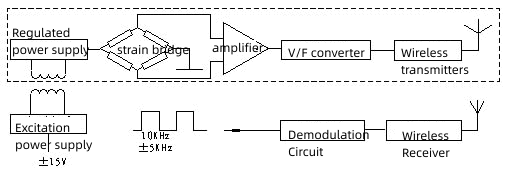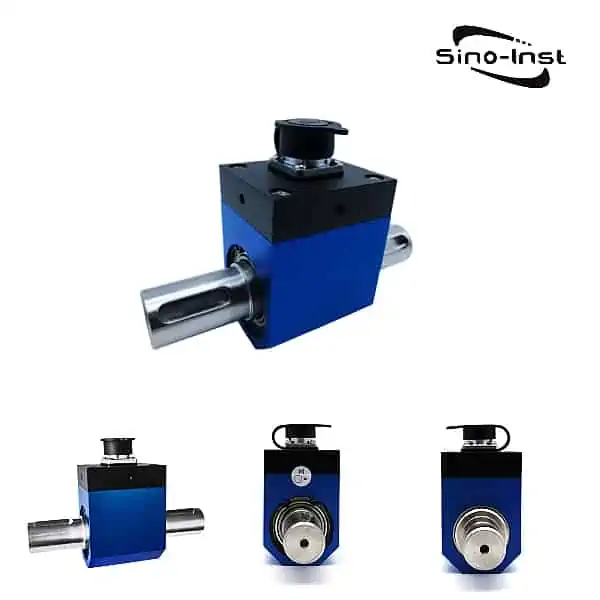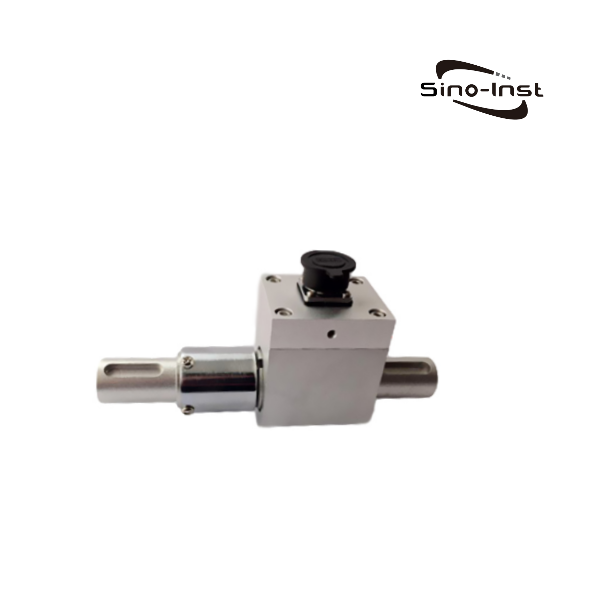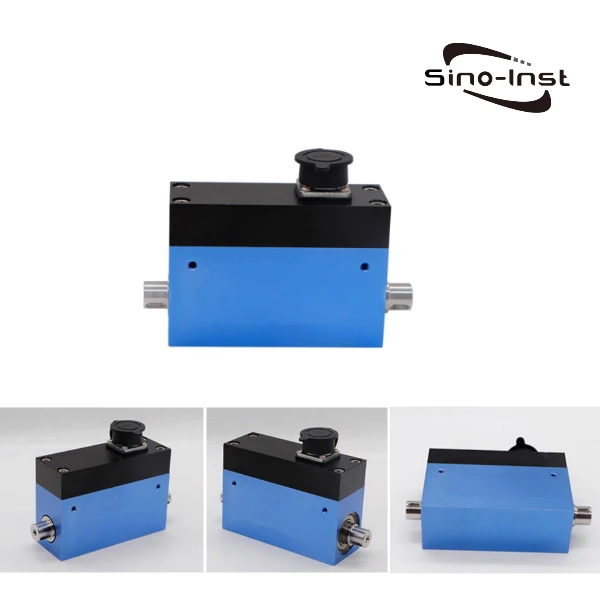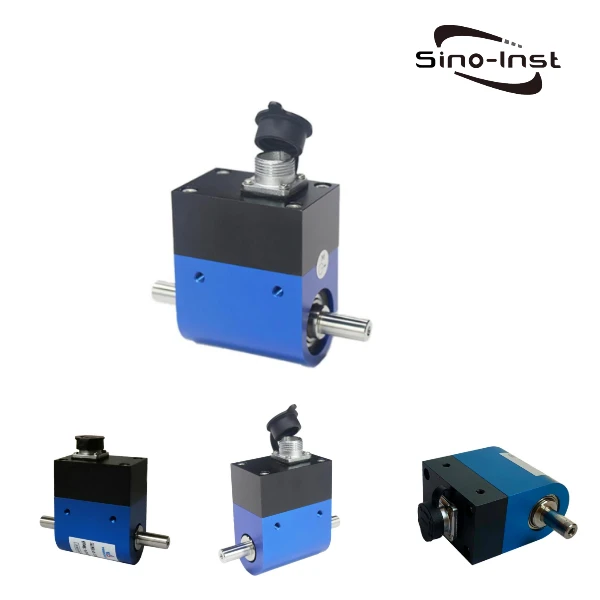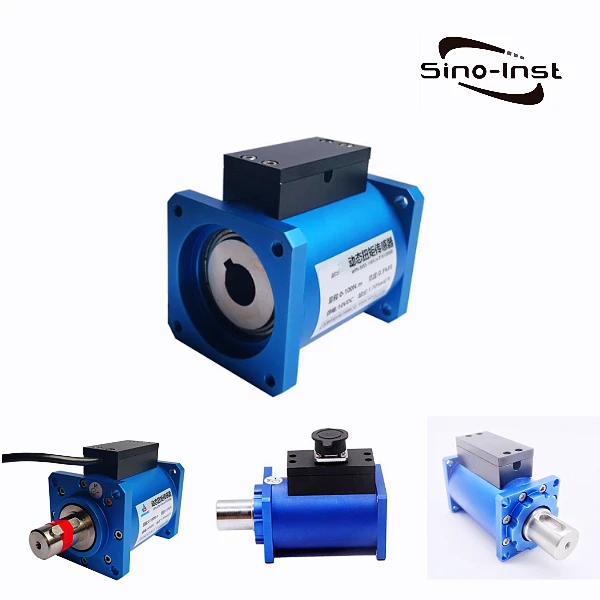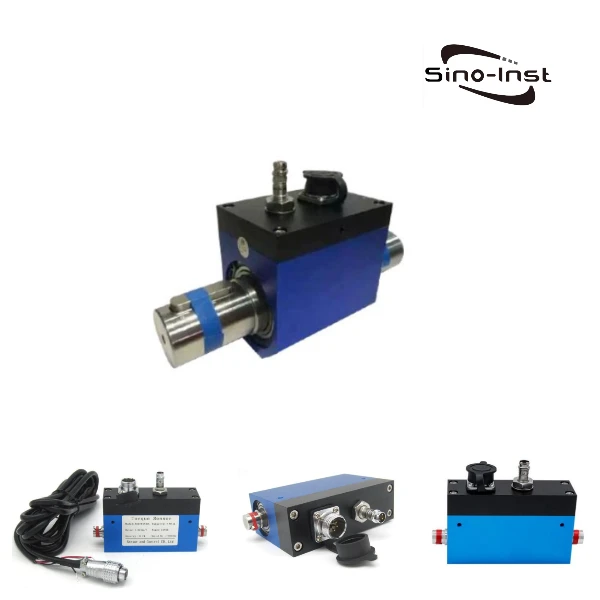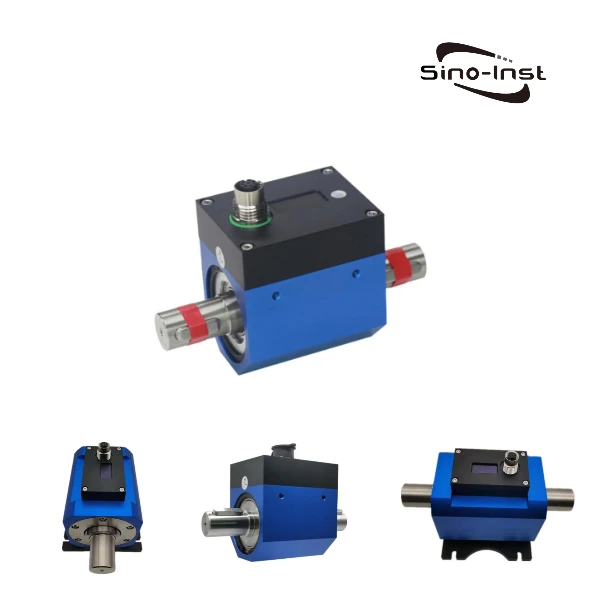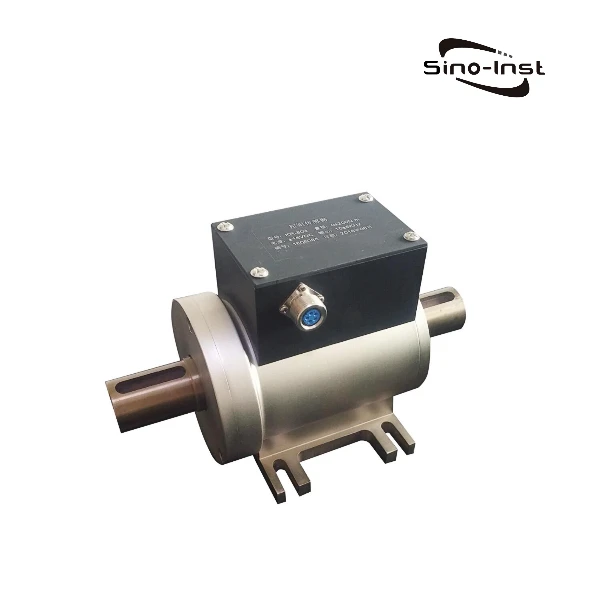
803 non contact rotary torque sensor is a non-contact high-speed rotary sensor. Also known as torque speed sensor. Due to their high measurement quality and low linearity error, the sensor has always been an advantage in torque measurement products. 803 non contact rotary torque sensor adopts non-contact design. Since there are no wearing parts, it is very suitable for long-term rotation torque measurement and high-speed rotation torque measurement environment. Whether you are testing systems on the production line or on a test bench or on a pilot machine, the 803 torque sensor is a great choice.
Features of 803 Non Contact Rotary Torque Sensor
- The axial dimension is short. It is suitable for occasions with short axial distance.
- Turn on the machine for 5 minutes to enter the working state. No warm-up process is required.
- High detection accuracy, good stability and strong anti-interference.
- No need for repeated zero adjustment. Continuously measure forward and reverse torque.
- The static torque can be measured. Dynamic torque can also be measured.
- Small size, the sensor can be used independently from the secondary instrument. Directly output frequency signal or analog quantity proportional to torque.
- Measuring range: 0—10000N.m standard optional. Non-standard special ranges can be customized.
Technical Parameters
| Specification | Parameter specification |
| Range | 2N.m, 5N.m, 10N.m, 20N.m, 50N.m, 100N.m, 200N.m, 300N.m, 500N.m, 1KN.m, 2KN.m, 3KN.m, 5KN.m, 10KN.m, 20KN.m, 30KN.m, 40KN.m, 60KN.m, 100KN.m (optional) |
| Power supply | ±15VDC , 12- 24VDC |
| Torque signal | 5~15Khz(amplitude 12V,zero point 10kHz)、4~20mA、1~5V、0-10V(Optional) |
| Rotational speed range | 0~1000、3000、6000、8000rpm |
| Speed signal | Standard products do not come with rotational speed measurement, if with rotational speed measurement, specify when ordering |
| Accuracy | ±0.1%FS, ±0.25%, ±0.5% |
| Annual stability | 0.25%/year |
| Insulation resistance | ≥2000MΩ(100VDC) |
| Ambient Temperature | -20~70℃(Customizable high temperature type -20~120℃) |
| Relative Humidity | 0~90%RH |
| Overload capacity | 120%~150%FS |
| Frequency Response | 1ms |
| Repeatability | ±0.1% FS |
| Non-linear | ±0.1% FS |
| Zero point temperature drift | ±0.2% FS |
| Rated Speed | 8000rpm (60 pulse/RPM) 803G type rated speed: 18000rpm |
Dimensions
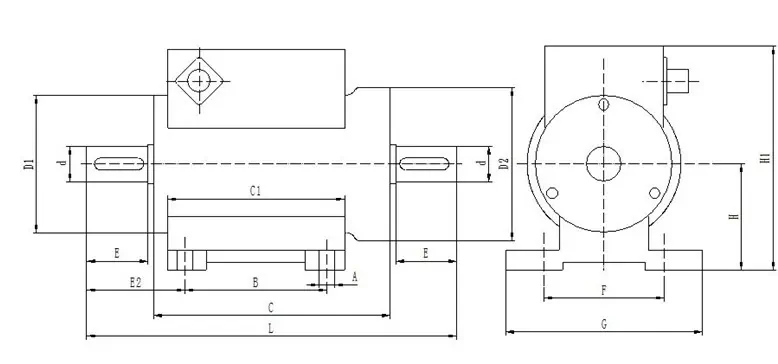
| Model (N.M) | Φ d | Φ D2 | A | B | C | E | F | G | H | H1 | C1 | E2 | L | keys b*h*l*n |
| 5 | 18 | 78 | 8 | 72 | 122 | 31 | 61 | 100 | 54 | 116 | 90 | 50 | 188 | 6x6x25x1 |
| 10 | 18 | 78 | 8 | 72 | 122 | 31 | 61 | 100 | 54 | 116 | 90 | 50 | 188 | 6x6x25x1 |
| 20 | 18 | 78 | 8 | 72 | 122 | 31 | 61 | 100 | 54 | 116 | 90 | 50 | 188 | 6x6x25x1 |
| 30 | 18 | 78 | 8 | 72 | 122 | 31 | 61 | 100 | 54 | 116 | 90 | 50 | 188 | 6x6x25x1 |
| 50 | 18 | 78 | 8 | 72 | 122 | 31 | 61 | 100 | 54 | 116 | 90 | 50 | 188 | 6x6x25x1 |
| 100 | 18 | 78 | 8 | 72 | 122 | 31 | 61 | 100 | 54 | 116 | 90 | 50 | 188 | 6x6x25x1 |
| 200 | 28 | 92 | 8 | 72 | 123 | 41 | 61 | 100 | 60 | 125 | 90 | 59 | 209 | 8x7x35x1 |
| 500 | 38 | 96 | 8 | 72 | 124 | 55 | 61 | 100 | 65 | 135 | 90 | 74 | 238 | 10x8x50x2 |
| 1k-2k | 48 | 106 | 12 | 69 | 126 | 70 | 78 | 120 | 68 | 144 | 90 | 90 | 270 | 14x9x65x2 |
| 3000 | 55 | 118 | 12 | 65 | 127 | 88 | 115 | 155 | 77 | 170 | 90 | 123 | 311 | 16x10x80x2 |
| 5000 | 75 | 144 | 12 | 69 | 131 | 105 | 156 | 180 | 90 | 185 | 100 | 139 | 347 | 20x14x95x2 |
| 10000 | 98 | 158 | 14 | 80 | 143 | 118 | 170 | 200 | 110 | 214 | 110 | 155 | 389 | 28x16x115x2 |
| 20k-30k | 105 | 170 | 14 | 87 | 160 | 125 | 180 | 204 | 115 | 236 | 123 | 165 | 420 | 28x16x119x2 |
| 50k-60k | 150 | 240 | 14 | 89 | 163 | 123 | 184 | 230 | 153 | 309 | 123 | 165 | 419 | 40x22x115x2 |
| 100k | 170 | 270 | 16 | 95 | 188 | 200 | 194 | 240 | 169 | 340 | 140 | 252 | 598 | 45x25x195x2 |
Learn more about the 803 Non Contact Rotary Torque Sensor
If you cannot find an answer to your question in our 803 Non Contact Rotary Torque Sensor, you can always contact us
and we will be with you shortly.
More Featured Torque Sensors For Sale
Sino-Inst is a manufacturer of 803 Non Contact Rotary Torque Sensor-100KN.m-Non-Contact. We offer more than 20 types of Non Contact Rotary Torque Sensors. Non Contact Rotary Torque Sensors can measure a variety of different mechanical power, rotational speed and torque measuring devices.
Non Contact Rotary Torque Sensor is also called rotary torque sensor, torque transducer. Mainly used for torque measurement in dynamic situations. The Non Contact Rotary Torque Sensor is equipped with a speed measuring device, which can measure the rotational speed while measuring the torque. At this time, the Non Contact Torque Sensor can also be called a torque speed sensor.
Sino-Inst’s Non Contact Rotary Torque Sensor, made in China, have good quality, with better prices. Our Non Contact Rotary Torque Sensors are widely used in China, India, Pakistan, USA and other countries.
Sino-Inst’s entire team is well trained, so we can ensure that each customer’s needs are met. If you need any help with your product requirements, whether it is a Non Contact Rotary Torque Sensor, level sensors, or other equipment, please give us a call .
Request a Quote

Wu Peng, born in 1980, is a highly respected and accomplished male engineer with extensive experience in the field of automation. With over 20 years of industry experience, Wu has made significant contributions to both academia and engineering projects.
Throughout his career, Wu Peng has participated in numerous national and international engineering projects. Some of his most notable projects include the development of an intelligent control system for oil refineries, the design of a cutting-edge distributed control system for petrochemical plants, and the optimization of control algorithms for natural gas pipelines.
803 Non Contact Rotary Torque Sensor-100KN.m-Non-Contact

803 non contact rotary torque sensor is a non-contact high-speed rotary sensor. Also known as torque speed sensor. Due to their high measurement quality and low linearity error, the sensor has always been an advantage in torque measurement products. 803 non contact rotary torque sensor adopts non-contact design. Since there are no wearing parts, it is very suitable for long-term rotation torque measurement and high-speed rotation torque measurement environment. Whether you are testing systems on the production line or on a test bench or on a pilot machine, the 803 torque sensor is a great choice.
Product SKU: 803 Non Contact Rotary Torque Sensor-100KN.m-Non-Contact
Product Brand: Sino-Inst
Product Currency: USD
Product Price: 1500
Price Valid Until: 2029-09-09
Product In-Stock: InStock
5

